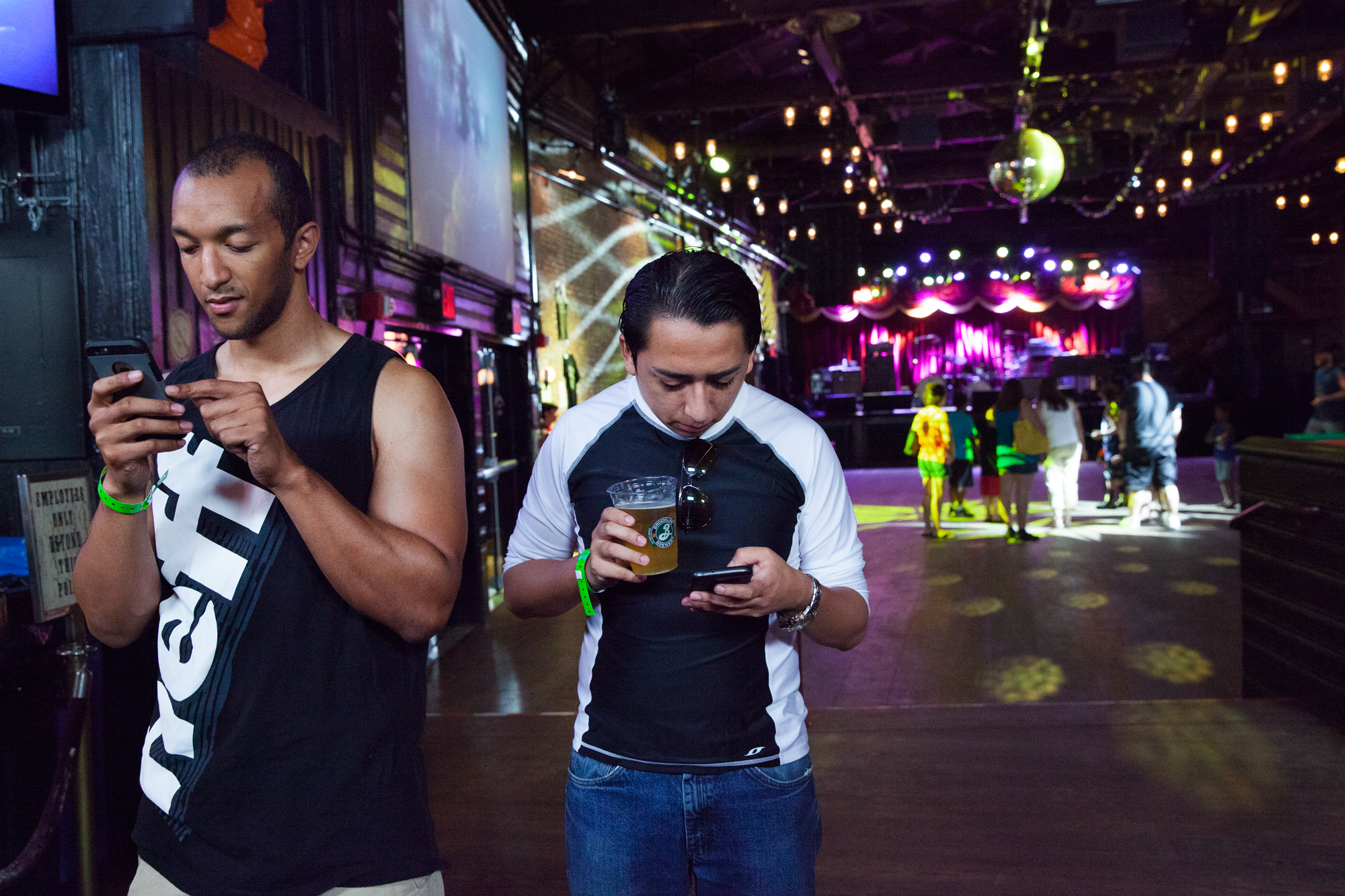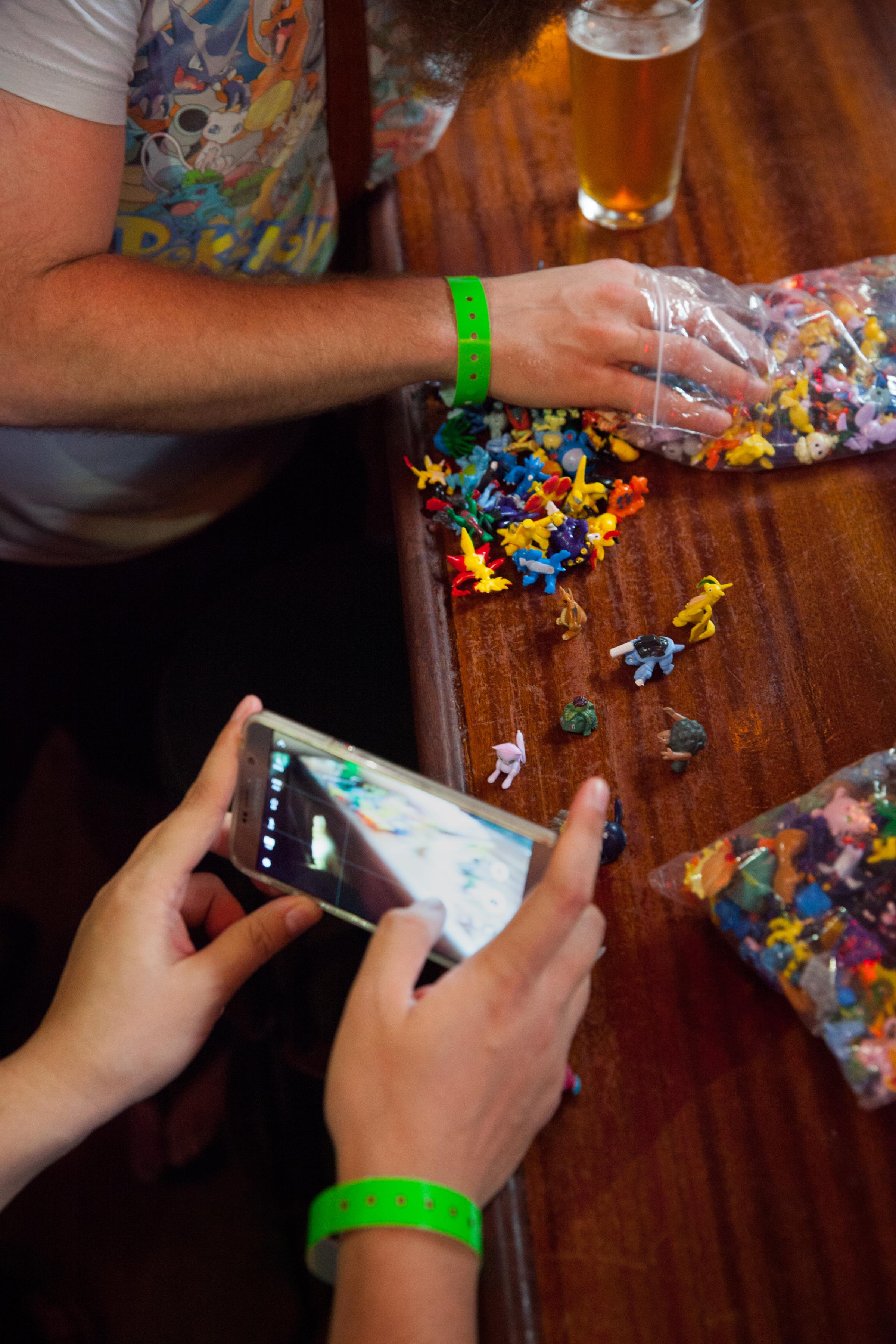It’s a Saturday morning, and I’m taking a bus to Greenpoint, Brooklyn. I stand at the base of a water tower and swipe at my phone’s screen to catch a Pokémon perched on a parked car’s rearview mirror. Three weeks ago, that sentence would not have made sense. Today, not only is it unnecessary to explain, millions can relate.
Released on July 6th, Pokémon Go is the spawn of Niantic Labs, a Google-incubated startup founded by John Hanke. Hanke had been at Google since 2004, when the tech giant bought his digital mapping startup Keyhole and used its 3D satellite imaging to create Google Earth. It was Hanke’s interest in using maps to attract people to explore new neighborhoods that lead to Ingress, Niantic’s first game and Pokémon Go’s close predecessor. Ingress guides players to real-world locations where they can acquire weapons for battles between opposing factions. Pokémon Go guides players to real-world locations where they can acquire Pokémon for battles between opposing factions. Though no official numbers have been released, it’s estimated that in the U.S. there are approximately 10 million daily Pokémon Go players, earning Niantic over $1.6 million a day.
All of this is why, after catching a Squirtle by the water tower, I make my way to Brooklyn Bowl, a triple-threat bar, bowling alley, and concert venue Jeff Ramos had designated the starting point of his public Pokémon Go bar crawl, a Facebook event over 2,400 people had expressed interest in. “The first weekend it came out I thought it was going to be a really niche kind of thing,” says Ramos. “Then I was at a bar with a friend, and we kept on noticing people coming in, playing the game.”
Ramos is an engagement editor at the gaming blog Polygon, and watched Pokémon Go’s popularity surge on the site’s forums. “You can instantly play it, figure it out, and interact with people,” he says. “I wanted to make an event where different people could come and play games that are easy to play, easy to learn. Where they could have as much fun as anybody else.”

For the first hour at Brooklyn Bowl players arrive from different corners of New York and New Jersey. As the crowd grows, it maintains a fairly equal male-female split. More striking is how many come alone. They haven’t come to drink and play with friends. They’ve come to drink and play and make friends.
Unlike most computer and mobile games before it, Pokémon Go thrives on the physical proximity of other players. The more users in a specific location, the more Pokémon can be lured there. Instead of competing, everyone can capture the same one. And despite gaming culture’s near inverse reputation for seclusion and inactivity, the conversion to Pokémon Go’s inherently public and shared experience has been immediate.
Explanations of this phenomenon abound like wild Zubats. First, Pokémon Go is free to download. And thanks to being laid over the skeleton of a now ubiquitous Google Maps, it’s intuitive. It also provides nostalgia on-demand. Nintendo released the original Pokémon 20 years ago, when Pokémon Go’s core demographic were ages 6 to 12. Better still, it allows gamers to continue gaming while providing them with the exact exercise and sunlight of which their hobby is derided for lacking.
“Before this, I went to work and then I went home,” says player Andrew Klein. “Now, I’ve been clocking between 8 and 9 miles a day.” Jason Barnes nods in recognition. Klein and Barnes were two of the many who had arrived by themselves, but who were by no means lonely. Halfway through our conversation Klein recognizes a familiar face and called across the bar: “WinterMute! Hey! You made it!”
He turns to me: “That’s his username. I met him at a gym the other day. Told him to come here.”
Pokémon Go gyms are real-world locations where players train the creatures they’ve captured, or battle rival teams for gym dominance. That this is a community is not a question. Why, then, has it taken so long for it to establish itself in a public space?

“Back in high school, it was sort of the heyday of local multi-player games,” Barnes says. “I would play with my friends…and sometimes a lot more with a LAN party. But the advent of online gameplay spoiled all of that, and companies stopped building it into games. And this is sort of coming back to the social aspect of it.”
By restoring gaming to a communal experience, Pokémon Go is inspiring countless meetups, crawls, and even dating sites.
That doesn’t mean it’s without its detractors. Early concerns include users blindly walking into traffic, reported muggings choreographed around remote gaming locations, and the social etiquette of celebrating a rare Pokémon capture in the Holocaust Museum.
But the prevailing wisdom at the bar crawl is that any game is only as dangerous as its users. “Look, every influencer on Snapchat is taking selfies while driving,” says Klein. “It’s a matter of common sense.”
Observing the bar, it was easy to agree. If I hadn’t known it was a Pokémon Go event, the number of people using their phones mid-conversation would not have been particularly noteworthy. The difference was that instead of distracting them from being with each other, their phones where what tethered them. They were not removed from the present; they were creating it.
“The ability to get a lot of people in a room and enjoy a single thing is something I love seeing happen,” Ramos says. Was this any different from fantasy football? Did it matter? A woman calls out from across the bar, “Guys! Guys! There’s a Dratini over here!” The crowd rushes east, and I use the brief opening at the bar to order another beer.
More Must-Reads From TIME
- Dua Lipa Manifested All of This
- Exclusive: Google Workers Revolt Over $1.2 Billion Contract With Israel
- Stop Looking for Your Forever Home
- The Sympathizer Counters 50 Years of Hollywood Vietnam War Narratives
- The Bliss of Seeing the Eclipse From Cleveland
- Hormonal Birth Control Doesn’t Deserve Its Bad Reputation
- The Best TV Shows to Watch on Peacock
- Want Weekly Recs on What to Watch, Read, and More? Sign Up for Worth Your Time
Contact us at letters@time.com